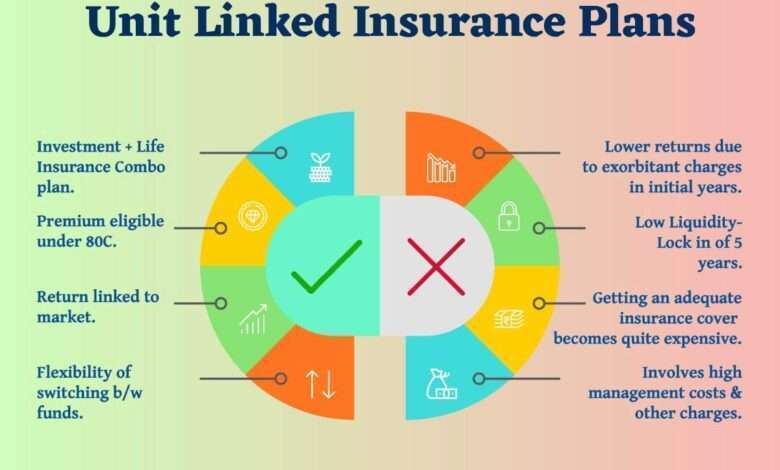Understanding Charges in Life Insurance Policies and ULIP Plans

Understanding the various charges in life insurance policies and ULIPs (Unit Linked Insurance Plans) can be challenging. These charges can significantly impact your insurance plan’s overall value and returns. Here we will break down the main types of charges to help you make informed decisions and optimise your investment. Read the following sections, which cover different charges, including premium payment term charges, mortality charges, and more.
What are the Main Types of Charges in Life Insurance Policies?
Life insurance plans have the following primary categories of charges:
Premium Payment Term Charge
This charge is applicable when you pay premiums over a limited period, known as the premium payment term, instead of paying over the entire policy term. This facility allows you to stop premium payments after the set period while still keeping the insurance coverage active. Insurers set this charge to provide continued coverage without premiums.
Mortality Charges
Mortality charges account for most of a life insurance policy’s total charges. Insurance companies deduct this fee monthly to provide the death benefit or life cover promised under the policy. The mortality charge is based on the age of the life insured, policy term, sum assured, and other risk factors. It increases every year in line with the growing age and risk.
Rider Charges
You can enhance your basic life insurance plan by opting for supplementary coverage through riders. For instance, you can add a critical illness rider or an accident disability rider. Insurance companies charge an extra premium for these optional riders over and above the base policy premiums.
Administration Charges
Life insurers deduct nominal administration charges for handling activities like medical check-ups, underwriting, policy issuance, claim processing, and general maintenance expenses. The fee is usually a small percentage of the premium.
What are Common Types of Charges in ULIP Plans?
There are two components in a ULIP – insurance coverage and investments. So, in addition to the usual insurance charges, there are also investment-related expenses. The essential ULIP charges include:
Premium Allocation Charges
Insurers deduct this one-time fee from the initial premium to cover underwriting and allocation expenses. IRDAI regulations limit the maximum permissible charge to a percentage of the premium.
Fund Management Charges
This recurring fee is for managing the various investment funds in a ULIP plan. Charges differ based on the type of fund – equity funds have the highest expense ratio, while debt funds have the lowest.
Policy Administration Charges
Insurers collect policy administration charges monthly for operational activities like account maintenance, premium reminders, annual statements, etc. The maximum charge is regulated and disclosed upfront.
Mortality Charges
A portion of the premium pays for the life insurance coverage under the plan. The applicable monthly mortality charges are based on age, sum assured, health condition, etc.
Surrender/Discontinuance Charges
High surrender charges apply if you exit the policy in the first 4-5 years. Insurers want investors to continue for the long term for better returns, so charges taper down over the years.
Fund Switching Charge
You can switch your fund portfolio a few times free of cost in a year. Additional switches invite a nominal switching charge.
Partial Withdrawal Charge
ULIPs allow withdrawals after the 5-year lock-in period. A few partial withdrawals are usually free, while subsequent ones have a small charge.
Other Miscellaneous Charges
Other costs include a revival fee, Goods & Services Tax, and guarantee charges for guaranteed returns in some products.
How to Choose a ULIP with Optimal Charges?
Evaluate Charges Holistically: Don’t look at charges in isolation. Compare the overall revenue yield or returns projection after deducting all applicable charges. A slightly costlier plan can give better outcomes.
- Check Transparency: Opt for insurers that fully disclose all current and future charges clearly and concisely in benefit illustrations and policy documents. Avoid hidden costs.
- Compare Similar Plans: Compare charges like premium allocation rates, policy fees, etc., across similar plans from different insurance companies to find the most competitive offering.
- Analyse Reduction Over Time: Certain fees like premium allocation charges reduce after a few years. So, compare how charges decline with duration while assessing two products.
- Give Importance to Past Performance: It may be worth considering whether the higher-cost fund has delivered superior historical investment performance even after all expenses.
- Avoid Aggressive Assumptions: Benefit projections are based on assumed future growth rates. Be wary of optimistic assumptions, as high returns may not materialise, eventually leading to lower maturity values.
- Invest for Long Durations: The impact of charges reduces significantly over a 15-20-year tenure as the compounding effect negates some costs.
- Seek Expert Help: When buying a ULIP plan, don’t rely only on online research. Consult a reliable insurance advisor to guide you through the complex universe of plans and charges.
Things to Remember About Life Insurance Charges
Life insurance charges seem like a drain on your money but are essential for providing you the protection you need. As long as charges are within regulatory limits and provide value for what you are paying, they are reasonable. Opt for transparency so there are no hidden surprises later—also, partner with insurers with a proven performance track record of consistently providing good service.
- Understand All Details: Before purchasing any insurance product, make sure you review the benefit illustration, policy document, and brochures in detail and ask questions upfront about charges so that all aspects are clear. An informed buyer makes better decisions.
- Review Portfolio Periodically: Review your ULIP investment portfolio performance yearly to ensure returns align with expectations after accounting for all applicable charges. Alter fund mix if needed.
Conclusion
There are considerable costs involved with life insurance and ULIPs. However, as a customer, you should understand the necessity of various charges and ensure fair value is derived in return. Transparent and regulated charges that offer convenience, flexibility, and superior services are reasonable. Read documents diligently, evaluate competing products holistically, invest only in trusted brands, and review portfolios diligently. This helps optimize outcomes over the long term, even with charges.
Contact PNB MetLife to understand the charges in Life Insurance Policies and ULIP Plans!




